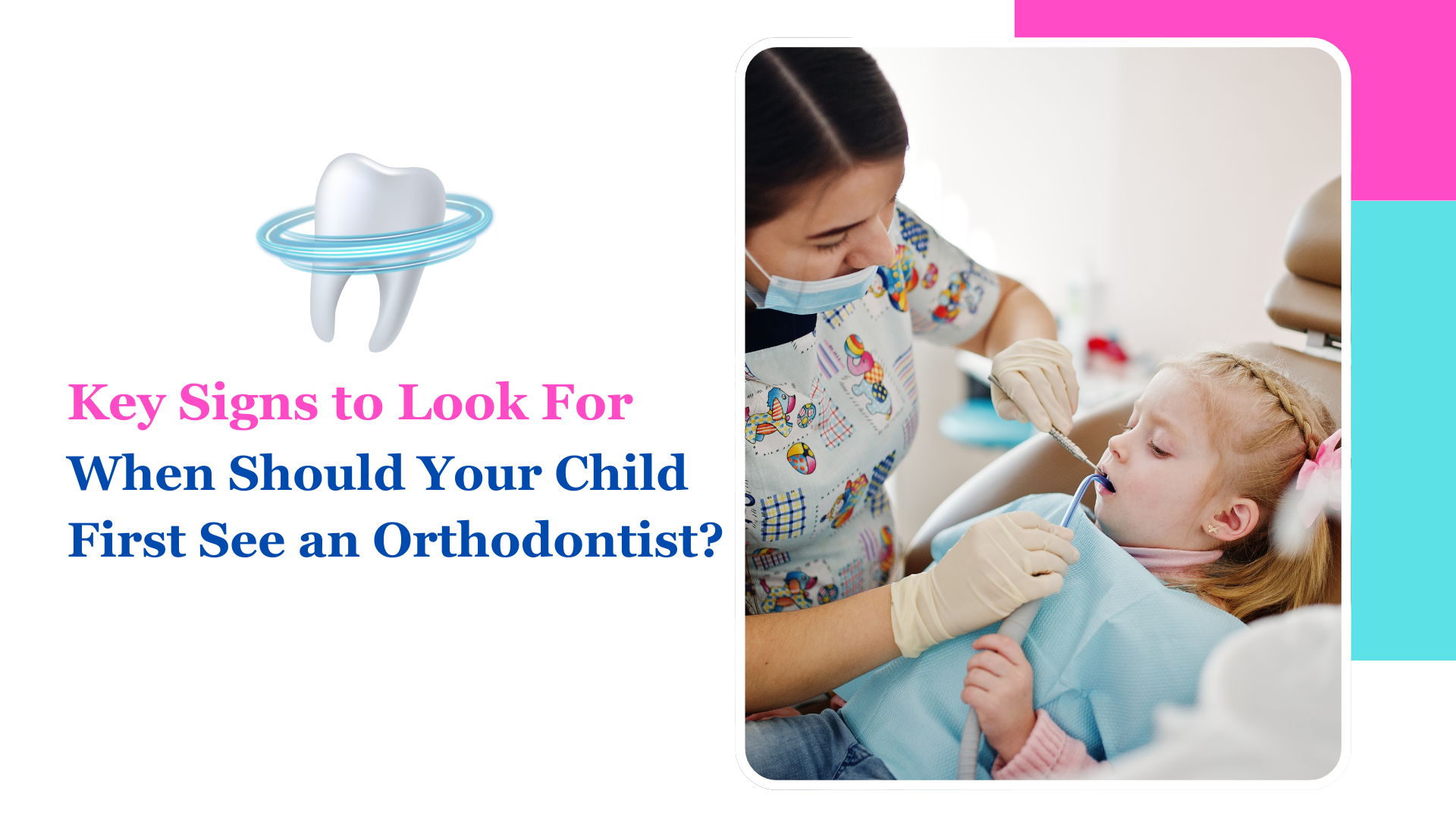Every parent hopes to give their kid the confidence of a healthy, attractive smile. However, determining whether to include an orthodontist in your child’s dental care may be challenging. Orthodontic difficulties sometimes develop slowly and are best treated early to prevent concerns later. Understanding the right time to act and identifying the indicators of prospective issues may save time, money, and suffering.
This article will help you understand the value of orthodontic treatment for children, the best age for a first visit, and the critical indicators that suggest your child could require orthodontic therapy.
Ideal Age for an Orthodontic Check-Up
At age 7, the American Association of Orthodontists recommends you consult an orthodontist. Most children at this age have a mix of baby and permanent teeth from which an orthodontist can evaluate the alignment of teeth, rate of jaw growth, or any issues with their bite. There is no guarantee of immediate treatment with early consultation, but the orthodontist can evaluate your child’s dental growth and canvass for corrective therapies if needed.
Key Signs Your Child Needs Orthodontic Care
Various visual and behavioural markers suggest your kid might benefit from orthodontic therapy. These include:
- Crowded or Crooked Teeth: Crowding is among youngsters’ most prevalent orthodontic difficulties. Teeth may overlap or twist owing to a lack of space in the jaw. Early intervention may assist in appropriate alignment as permanent teeth grow.
- Gaps Between Teeth (Diastema): Significant gaps between teeth may look innocuous but might lead to inappropriate spacing of permanent teeth. Orthodontists can assess whether these gaps will fill spontaneously or need treatment.
- Protruding Teeth: If your child’s top front teeth protrude substantially, they may be at risk of dental damage. This problem is sometimes called “buck teeth” and may be remedied with early orthodontic care.
Bite Issues
- Overbite: Upper front teeth significantly overlap the lower teeth.
- Underbite: Lower front teeth protrude beyond the upper teeth.
- Crossbite: Some teeth are misplaced, producing poor contact with opposing teeth.
- Open Bite: The top and lower teeth fail to touch as the youngster bites down.
Difficulty Chewing or Speaking
Problems with biting, eating, or speaking suggest underlying orthodontic concerns. Early therapy may enhance both oral function and speech development.
Mouth Breathing or Snoring
Persistent mouth breathing or snoring may be connected to misaligned jaws or crowded teeth. Orthodontists may determine if braces or other treatments can relieve these concerns.
Thumb Sucking or Other Habits
Prolonged thumb sucking, pacifier usage, or tongue thrusting may lead to biting issues and misaligned teeth. Orthodontic therapy may be essential to rectify the results of these practices.
Why Early Orthodontic Care Matters
There are many benefits to early orthodontic treatment. It assists in promoting ideal jaw growth, which promotes developmental balance and may reduce the need for extensive dysfunction treatments later on. Identifying slight alignment issues as soon as possible allows for preventative measures to ensure more severe, expensive orthodontic problems down the line do not occur.
Moreover, free from crooked teeth and a misaligned bite, they can feel confident as they grow and develop. Treatments such as palatal expanders or partial braces are often employed to assist with proper tooth and jaw development. These non-invasive treatments are most successful when performed sooner rather than later, so early intervention plays a critical role in maintaining a healthy and confident smile.
Common Orthodontic Treatments for Children
Traditional metal or ceramic braces are used to improve alignment and biting abnormalities.
- Palatal Expanders: These devices broaden the upper jaw to allow room for correct teeth alignment.
- Retainers: Retainers may be used to preserve alignment following therapy or to make minor corrections.
- Space Maintainers: If a baby tooth is lost prematurely, a space maintainer ensures the permanent tooth has room to come in appropriately.
Final Thoughts
Supervising your child’s oral health and looking for signs of orthodontic problems might open the gateway to a lifetime of good oral health. Depending on the case, some children may require urgent treatment, but making an appointment with a physician specialising in children’s orthodontics is preventive care.
Do not delay getting checked if you notice something wrong with your child’s teeth or bite. You are advised to take your child for an orthodontic check-up if you want to fix the problems and guarantee your child the best in orthodontic care. Even if a child has poor genetics, early care and professional coaching lay the foundation for a confident and healthy future smile.

Leave a Reply
You must be logged in to post a comment.